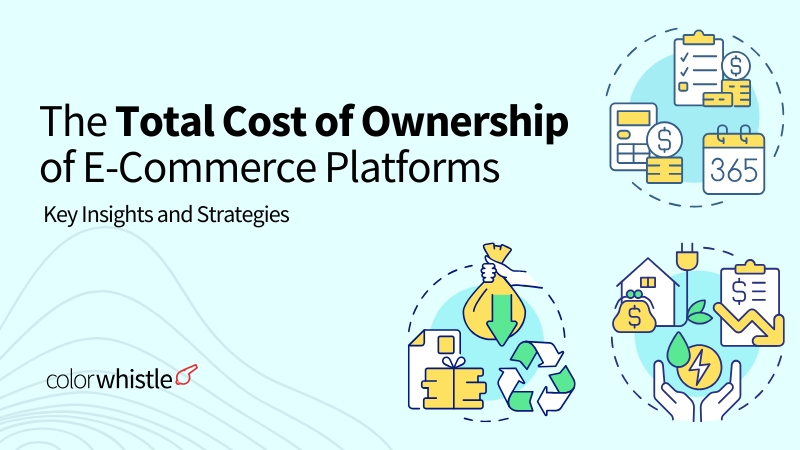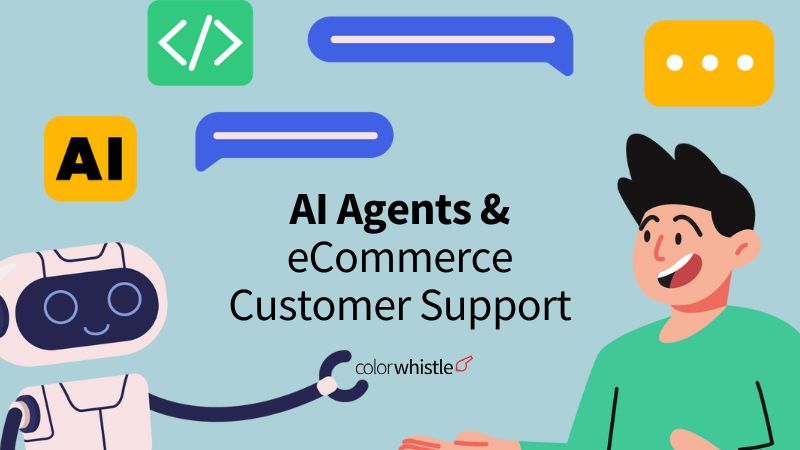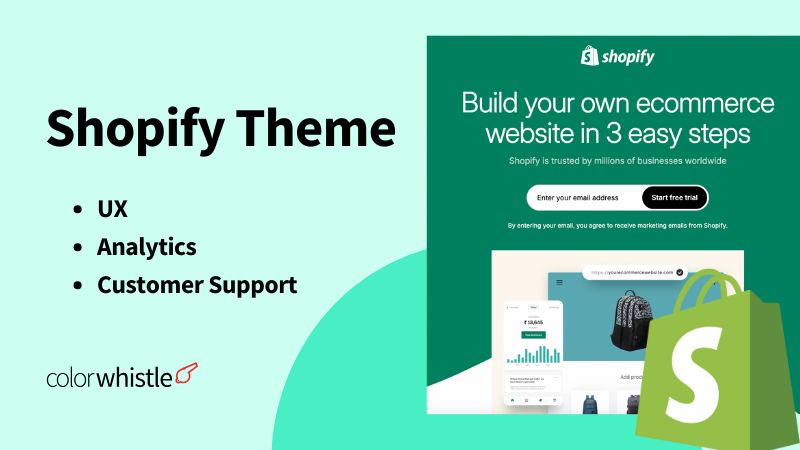In today’s fast-paced digital world, selecting the right e-commerce platform can make or break your business. While many focus on initial costs, the true value of a platform lies in its Total Cost of Ownership (TCO) a calculation that includes setup, maintenance, operational efficiency, and long-term scalability.
Understanding TCO helps businesses uncover hidden costs and make informed decisions that pave the way for sustainable growth. This guide explores the key components of TCO, strategies to lower it, and why platforms like Shopify stand out for their cost-efficient scalability and advanced features. For those migrating platforms, check out our blog on Migrate from WooCommerce to Shopify Plus in 6 Steps, which offers insights into setting up a streamlined e-commerce website development service that supports your business goals.
What Contributes to TCO?
To make informed decisions about the Total Cost of Ownership, it’s important to look beyond the initial price tag of any e-commerce platform. TCO considers both direct and indirect costs, which can vary over the platform’s lifespan. These costs are broadly divided into several categories:
- Platform Costs – Monthly or yearly fees for accessing the platform, plus maintenance, payment processing, and account management fees.
- Operational and Support Costs – Expenses for IT infrastructure, user management, order fulfillment, and security.
- Implementation Costs – Costs associated with setting up the platform and migrating from a previous system.
- Conversion Opportunity Costs – Lost revenue potential if the platform has lower conversion rates or a complicated checkout process.
A comprehensive TCO calculation is usually done for three to five years, offering a long-term perspective on costs and potential benefits.
Key Factors Contributing to TCO
Each component in a TCO calculation uniquely impacts the overall cost. Let’s take a closer look at some key areas and how they play a key role in TCO for an e-commerce platform.
Platform Costs
Platform fees represent the foundational cost of any e-commerce platform. These costs include the monthly or annual fees required to keep the platform running and accessible. Businesses should also consider costs associated with:
- Payment Processing – Depending on the platform, there might be additional charges for payment gateways and processors.
- Technical Support – Some platforms include 24/7 support in their package, while others may charge extra for advanced troubleshooting.
- Maintenance and Upgrades – Regular updates to maintain security and functionality are essential, and these can add to the long-term cost.
Operational and Support Costs
A platform’s operational costs can vary depending on the complexity of the setup. For instance, businesses may need additional IT resources to manage these elements if a platform requires extensive customizations or third-party integrations. Common operational costs include:
- Backend Management – Costs associated with product management, promotions, and imports.
- Web Hosting and Security – Ensuring data backups, security, and compliance involves ongoing costs that can significantly impact TCO.
Example: A business using a highly customized WooCommerce setup may find that even small changes require developer input, which adds to TCO. Shopify’s cloud-based architecture, by contrast, reduces the need for dedicated IT resources, helping to streamline operational expenses.
Also read
Implementation Costs
Implementation costs include the resources necessary to initially set up the platform and, if needed, migrate from an existing one. For established businesses, these costs can increase depending on the complexity of their current system. Key factors that influence implementation costs include:
- System Integration – Integrating with ERP systems, financial software, or inventory management tools can add significant costs, especially if custom APIs are needed.
- Customization Requirements – Highly customized sites demand more developer hours, which can quickly increase initial setup expenses.
Shopify’s ecosystem offers extensive integrations with common business tools, making it easier and more affordable to set up for large and small businesses alike.
Also Read
How to Lower TCO for E-Commerce Platforms
Now that we understand what goes into TCO, let’s see the practical strategies to reduce these costs.
1. Choose Platforms with Native Functionality
One of the easiest ways to lower TCO is to select a platform with strong native capabilities. Platforms with built-in features reduce the need for custom development or third-party integrations, helping to minimize implementation and operational costs.
Shopify Advantage: Shopify offers extensive native features, including advanced B2B and B2C options, that cater to a wide range of business needs.
2. Shopify’s App Ecosystem
Shopify’s app marketplace provides businesses with access to hundreds of apps that enhance functionality without the need for extensive custom development. This can be particularly useful for adding features like advanced analytics, or shipping options.
Cost Savings: By using pre-built apps, businesses can avoid the expense of developing these from scratch. Additionally, apps can be deployed quickly, minimizing time to market and improving customer satisfaction.
3. Minimize Opportunity Costs with High Conversion Rates
One often overlooked element of TCO is the opportunity cost of not selecting a platform with high conversion rates. Studies have shown that Shopify’s checkout process converts better than those of many competing platforms.
The Shopify Edge: Shopify’s accelerated checkout option, Shop Pay, has been shown to improve conversion rates by as much as 50% compared to traditional checkouts. Businesses that use Shop Pay can see substantial reductions in TCO simply by converting more sales at the checkout stage.
4. Choose a Platform with Rapid Time to Market
Time to market is another critical component of TCO, particularly for businesses looking to seize market opportunities quickly. Delays in launching new features or making site adjustments can lead to missed revenue opportunities and, in some cases, increased development costs.
The benefit of Shopify: With Shopify’s streamlined architecture, businesses can get their sites up and running faster, minimizing time to market and maximizing early revenue potential. For instance, while some platforms may require months to integrate new features, Shopify offers tools that enable changes in a matter of days or even hours.
Real-World TCO Benefits with Shopify
Many brands have already seen significant reductions in TCO by choosing Shopify. Convert Digital, a Shopify user, noted that Shopify’s platform allowed them to focus on innovation rather than maintenance. By eliminating constant technical challenges, they focused on projects that positively impacted their bottom line.
For 4Ocean, Shopify helped their marketing team to make changes and run promotions independently, avoiding the need for costly developer assistance. This helped 4Ocean not only reduce costs but also respond to market demands quickly.
Wrap up
In e-commerce, Total Cost of Ownership (TCO) plays a crucial role in determining long-term business success. Platforms like Shopify excel with their ease of use, powerful features, and efficient cost management. Choosing the right platform ensures you’re not just minimizing costs but also setting up for future growth.
At ColorWhistle, we specialize in providing e-commerce website development services tailored to your business needs. If you’re ready to create a cost-effective and scalable online store, contact us today at +1 (919) 234-5140 to get started!
What’s Next?
Now that you’ve had the chance to explore our blog, it’s time to take the next step and see what opportunities await!





